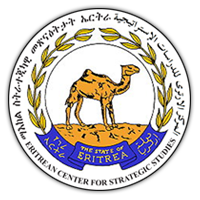April 27, 2015
Message from H.E. Amina Nurhussein, Minister of Health
 The significant improvements in the health status of the Eritrean population and the achievements recorded in the Millennium Development Goals are a result of a concerted effort by government, citizens, civic and community leadership, and development partners.
The significant improvements in the health status of the Eritrean population and the achievements recorded in the Millennium Development Goals are a result of a concerted effort by government, citizens, civic and community leadership, and development partners.
Among the crucial factors that can be mentioned are good policy and programs, accelerated human resource development, construction of an expanded network of healthcare facilities, availability of appropriate drugs, supplies, and equipment, and sustained political commitment.
All of these contributed substantially to health awareness and improved citizens’ access to quality and timely healthcare. In the period since national liberation in 1991, access to healthcare within a radius of 10 kilometers increased from 46 percent to 78 percent, while over 60 percent of the population enjoys access to care facilities within a radius of 5 kilometers.
In brief, the progress made in the health sector over the past two decades resulted in a reduction in under five mortality from 150 per 1,000 live births in 1990 to 50in 2013. During the same period, the maternal mortality ratio decreased from 1,700 per 100,000 live births to 380.
HIV prevalence was halted at a low level, below 1 percent, while its incidence has decreased from 45 per 100,000 in 2001 to less than 8 in 2012. Morbidity and mortality due to malaria have decreased by 85 percent and 90 percent, respectively, since 1998. Incidence of malaria is now at a low level of 1,282 per 100,000. Likewise, the incidence of tuberculosis has decreased from 243 per 100,000 (1990) to 97 (2011). If life expectancy at birth is taken as a composite indicator of health status, its trends are equally encouraging. Life expectancy at birth increased from 48 years in 1990 to 63 years in 2013.



